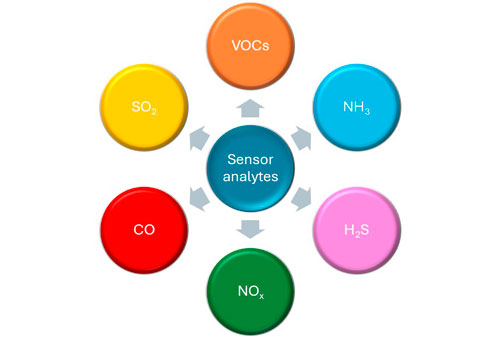 Need a decision-making framework for matching sensing chemistry and form factor to mission-critical performance requirements? In their timely ECS Sensors Plus article, “Review—Aspects of Electrochemical Gas Sensor Technologies,” Luke Saunders and Benjamin R. Horrocks map the state of the art across electrochemical gas sensing—distilling fundamentals, surveying device architectures, and pinpointing the materials and design choices that most strongly influence real-world performance.
Need a decision-making framework for matching sensing chemistry and form factor to mission-critical performance requirements? In their timely ECS Sensors Plus article, “Review—Aspects of Electrochemical Gas Sensor Technologies,” Luke Saunders and Benjamin R. Horrocks map the state of the art across electrochemical gas sensing—distilling fundamentals, surveying device architectures, and pinpointing the materials and design choices that most strongly influence real-world performance.
Why this review matters
Electrochemical gas sensors sit at the heart of applications that touch daily life: environmental monitoring, workplace and industrial safety, healthcare, and the fast-growing hydrogen economy. Saunders and Horrocks’ piece is more than a literature snapshot; it synthesizes a crowded literature into a practical, navigable guide. Readers come away with a sharper understanding of:
- Sensing principles and modes (e.g., amperometric, potentiometric, conductometric) and how each maps to selectivity, sensitivity, and noise trade-offs;
- Materials and interfaces—from catalytic electrode choices and solid vs. liquid electrolytes to nanostructuring strategies that boost active area and accelerate kinetics;
- System-level realities—cross-sensitivity, humidity and temperature effects, baseline drift, calibration strategies, lifetime and fouling, and pathways to standards-aligned validation;
- Integration and deployment—miniaturization, low-power operation, and coupling with edge electronics for IoT-ready sensing platforms.
Advancing the field—together
ECS Sensors Plus was founded as a one-stop home for sensors research, spanning materials, devices, arrays, and full systems—bridging fundamental electrochemistry with practical deployment. The journal’s mission is to accelerate rigorous, open, and citable progress across the sensors community.
This review embodies that mission. It clarifies common pitfalls (like environmental confounders and cross-interference), highlights promising design directions (including robust electrolytes and selective catalytic interfaces), and underscores the importance of reproducible testing protocols—insights that shorten the path from lab discovery to field-trusted instrumentation.
Call for submissions
If your work advances sensors—in materials, architectures, measurement methods, signal processing, arrays/networks, or end-to-end systems—we invite you to submit to ECS Sensors Plus. The journal provides an international platform for fast, rigorous peer review and broad dissemination to a multidisciplinary audience of electrochemists, engineers, and technologists. Learn more about scope and author guidelines on the ECS Sensors Plus page.
Read the article
Dive into “Review—Aspects of Electrochemical Gas Sensor Technologies” and explore the authors’ recommendations for building sensors that are more selective, stable, and deployment-ready. Read it now: https://iopscience.iop.org/article/10.1149/2754-2726/adf2b9.


